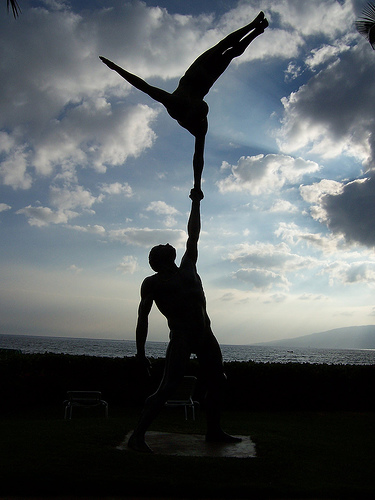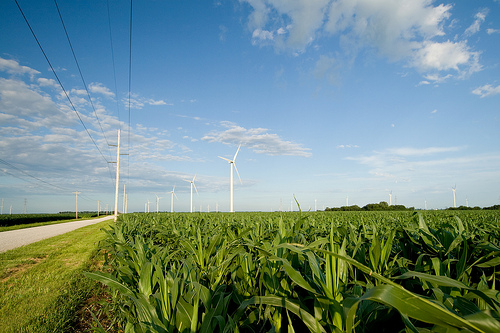 Wind projects shouldn’t require financial acrobatics.Photo: Chris GawThis is part of a series on distributed renewable energy posted to Grist. It originally appeared on Energy Self-Reliant States, a resource of the Institute for Local Self-Reliance’s New Rules Project.
Wind projects shouldn’t require financial acrobatics.Photo: Chris GawThis is part of a series on distributed renewable energy posted to Grist. It originally appeared on Energy Self-Reliant States, a resource of the Institute for Local Self-Reliance’s New Rules Project.
Community wind projects deliver larger economic returns and encounter less local resistance, but a new report released last week shows that developing community wind still requires a daunting effort.
The report, by Lawrence Berkeley Labs wind guru Mark Bolinger, illustrates the new heights of financial acrobatics required to finance community wind projects. The history of community wind was already rich with terms like the “Minnesota Flip” and “tax equity partner,” but a quick scan of the terminology alone illustrates the enormous effort required of local wind developers to get project financing:
- a 4.5 megawatt (MW) project in Maine that combines low-cost government debt with local tax equity
- a 25.3 MW project in Minnesota using a sale/leaseback structure
- a 10.5 MW project in South Dakota financed by an intrastate offering of both debt and
equity - a 6 MW project in Washington state that taps into New Markets Tax Credits using an
“inverted” or “pass-through” lease structure, and - a 9 MW project in Oregon that combines a variety of state and federal incentives and loans
with unconventional equity from high-net-worth individuals.
The financial terms are more reminiscent of circus performers than power plant development, and they highlight the significant barriers to community wind:
For all their advantages — local construction and contracting jobs, dividends for local shareholders, loans from local banks, reinvestment of profits in local communities — these projects account for only 2 percent of the wind power capacity in the United States, or 4 percent, if projects owned by public utilities are included. (Wind power of all varieties contributes 2 percent of all the electricity used in the U.S.)
In particular, community wind investors often lack the tax liability required to fully cash in on the federal Production Tax Credit that provides 2.1 cents per kilowatt-hour over 10 years. (Note: for more on this see our 2008 report on Broadening Wind Energy Ownership.)
The last two years have been the exception, because the federal stimulus package allowed wind projects to get a cash grant in lieu of the tax credit. But even with the grant, community wind projects have needed these new high-flying moves to attract sufficient capital and get their projects off the mat. It’s worth considering what makes the U.S. such a hostile market for community wind:
Community wind may sound quaint, but as of 2000, it made up roughly 80 percent of all wind power capacity in Germany, Denmark, Sweden and the United Kingdom combined.
It’s also an issue for the U.S. wind industry’s future. While U.S. wind projects generally are encountering increasing hostility and political fights, community wind projects typically find a warmer welcome:
“In local communities, there’s been little to no opposition to wind projects,” said Eric Lantz, a wind policy analyst at the Renewable Energy Laboratory and a co-author of the study. “There’s more pride taken when you’re able to participate with an ownership stake.”
Several studies reinforce the idea that a local ownership stake is key to acceptance of wind projects.
It would be well worth the effort for U.S. lawmakers to consider how to make community wind easier. Community wind projects tend to be of a size that’s more cost-effective than large wind projects, making wind power more affordable. Community wind projects generate more local economic benefits, increasing the returns to host communities and states with supportive wind policies. And most of all, community wind projects generate minimal local opposition, a key to expanding wind energy production.
What can the U.S. do better? The U.S. state with the most community wind — Minnesota — used a cash incentive production payment (rather than tax credits), and most European countries use standard, long-term contract offers with an attractive price (also known as CLEAN contracts or feed-in tariffs). It wouldn’t take much to make a big difference.



